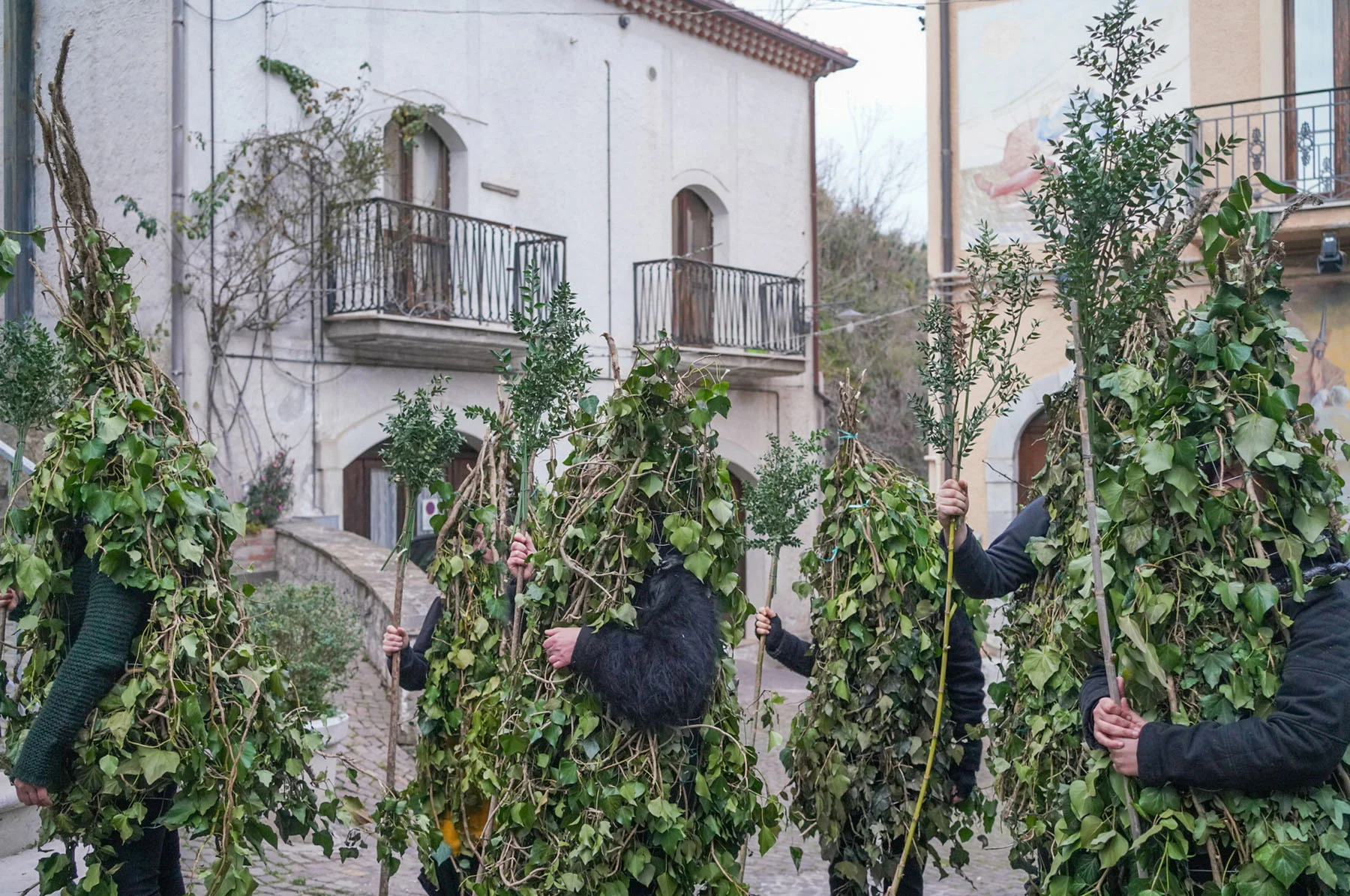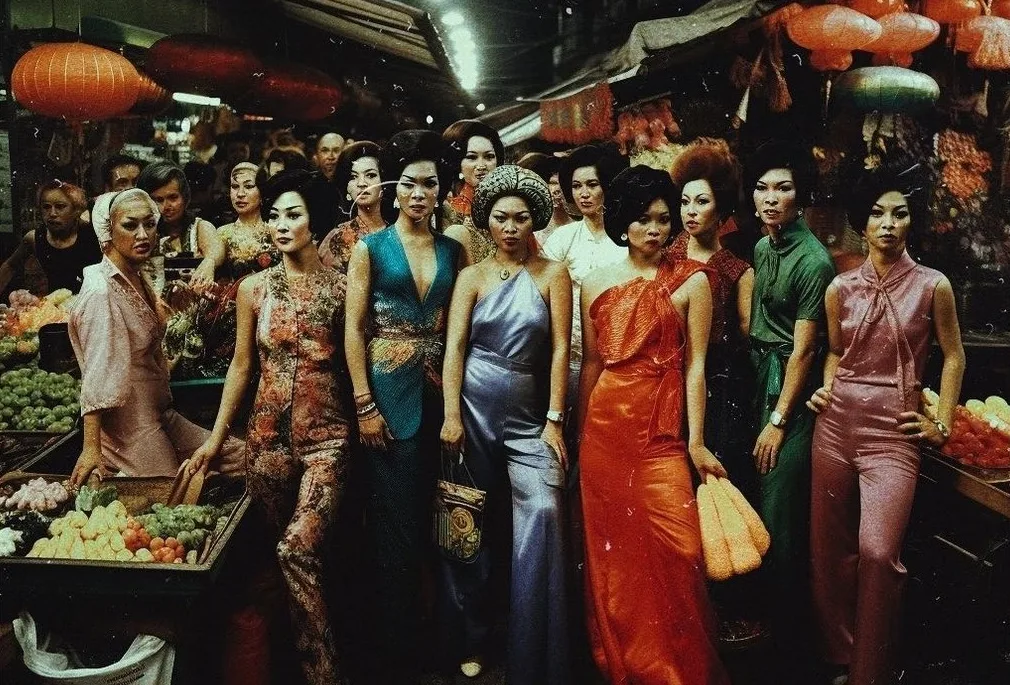

Artist Terrell Villiers was raised in a conservative household and, growing up, they felt a sense of shame and restriction that kept them from expressing who they truly were. Now, as Dalia Al-Dujaili learns, they create Queer sanctuaries via illustration, featuring vibrant and autonomous characters, inspired by the passionate nightlife communities that made them feel at home and helped them come into their own.
Growing up, Terrell Villiers turned to the cover art of iconic hip-hop and soul albums for inspiration. Tracing the covers of CDs—Reggae Gold, Mary J. Blige, Mariah Carey, Ashanti and Faith Evans—the self-taught artist practiced drawing before they learned how to proportion bodies and faces. Interestingly, bodily proportions have become the focal point in Villiers’ work—or, the exaggeration and distortion of such proportions. The eye is immediately drawn to Villiers’ larger than life characters, who are bold, sometimes elongated and sometimes curvaceous, and always dressed to impress.


My characters become vessels for the autonomy and vibrancy I looked to manifest within myself.
Villiers, who’s now based in Brooklyn, New York, grew up in a conservative household, “so self-expression wasn’t really welcomed for the most part.” Drawing was Villiers’ “first true love affair,” and the artist’s style began to evolve the more they embraced their Queerness “and surround myself with a community of friends that embodied the kind of liberatory freedom and self-expression I always aspired to have.” The characters in Villiers’ world are expressive, sexy and camp, with shiny dark Black skin, statement jewelry and risqué outfits—a far cry from the “sense of shame and restriction” of their upbringing, which kept Villiers “in a box…keeping me under some sort of repressed spell.”
In their early twenties, Villiers discovered Queer nightlife and organizations of Miami. MASISI and (F)empower were a turning point for them, “and quite literally a breakthrough. Through those spaces, I was fully radicalized, and began to truly come into my own,” they say. Villiers channels this energy into their cartoons: “My characters become vessels for the autonomy and vibrancy I looked to manifest within myself. It’s my way of creating a world where that freedom exists, not just for me, but for others who might need to see it, too.”




It’s my way of creating a world where that freedom exists, not just for me, but for others who might need to see it too.
In one piece titled “All Night Long” (2024), clubgoers stand under neon lights, their Black skin glowing blue both from the sweat of sensual dance and from their bright garments. And pieces like “Devore,” “Desire” and “Demon” (all 2022) celebrate Black Queer sexuality, eroticism and sensuality as something beautiful and complicated, while stepping away from the loud, colorful and detailed moods of Villiers’ usual pieces, and employing monotone and silhouette instead.
Villiers says they are one of the many archivists in the community, driven by a motivation to preserve stories, experiences and emotions: “Black Queer communities are typically ostracized and underrepresented, and often have their contributions to history erased. Through my cartoons, I feel pulled to tell those narratives in a way that can not only be seen by us, but can be shared with the next generations of kittens, too, ensuring they aren’t lost to time.”


In pieces such as “ACAB” (2020), “Free Congo” and “Free Palestine,” Villiers’ activism also shines through. Their commitment to social justice hasn’t always been clear, though: “Someone once told me that as a Black, Queer, bigger-bodied, emotionally complex artist, everything I create would always be seen as political,” they tell me. “At first, I loathed hearing that. It felt like it erased the personal and creative aspects of my work. But over time, I’ve come to realize there’s truth in it.” Living at the intersection of so many marginalized identities, simply existing in certain spaces for Villiers, and others like them, can be seen as a radical or controversial act: “The world often doesn’t give people like me the space to just be.”

As Villiers reminds us, Queer folk are often sidelined within larger liberation movements. “It’s frustrating because we’re usually right there in the trenches, fighting for change, yet we’re still then treated like outcasts even among the marginalized,” says Villiers. But the artist is comforted by the idea that, though they struggle to make art during times such as the genocides in Congo, Palestine and Sudan, their “art doesn’t have to solve everything.” This is one of the key themes that Villiers explores in their “Club Oasis” series. “It’s not about being an individual hero, or a main character, but about being part of a larger movement.”


“Club Oasis” is a series Villiers has been working on about a fictional neo-futuristic underwater sanctuary: a home for Queer refugees of color from across the globe “escaping various forms of geoecological violence,” they explain. “Club Oasis” is a way for the artist to return to their grassroots activism, and they look forward to adapting “Club Oasis” into an animated series in the near future. “It’s a concept I’ve poured so much of myself into, and I can’t wait to see it come to life.”
It’s no surprise that the environments in the world of “Club Oasis” are nightclub spaces; so many of Villiers’ characters are based on people they meet during Queer club nights. “Everyone who finds their way to these Queer spaces carries a unique backstory,” they say. “Some are magical and serendipitous, others are heavier, shaped by sadness, trauma or the need to escape. No matter how they find their way, these stories often share a similar thread: liberation.” For the Queer community, especially racialized LGBTQ+ individuals, the club is often a sanctuary, “a safe haven where people can leave behind the layers of shame from the outside world,” as Villiers puts it, “and truly find themselves.”


